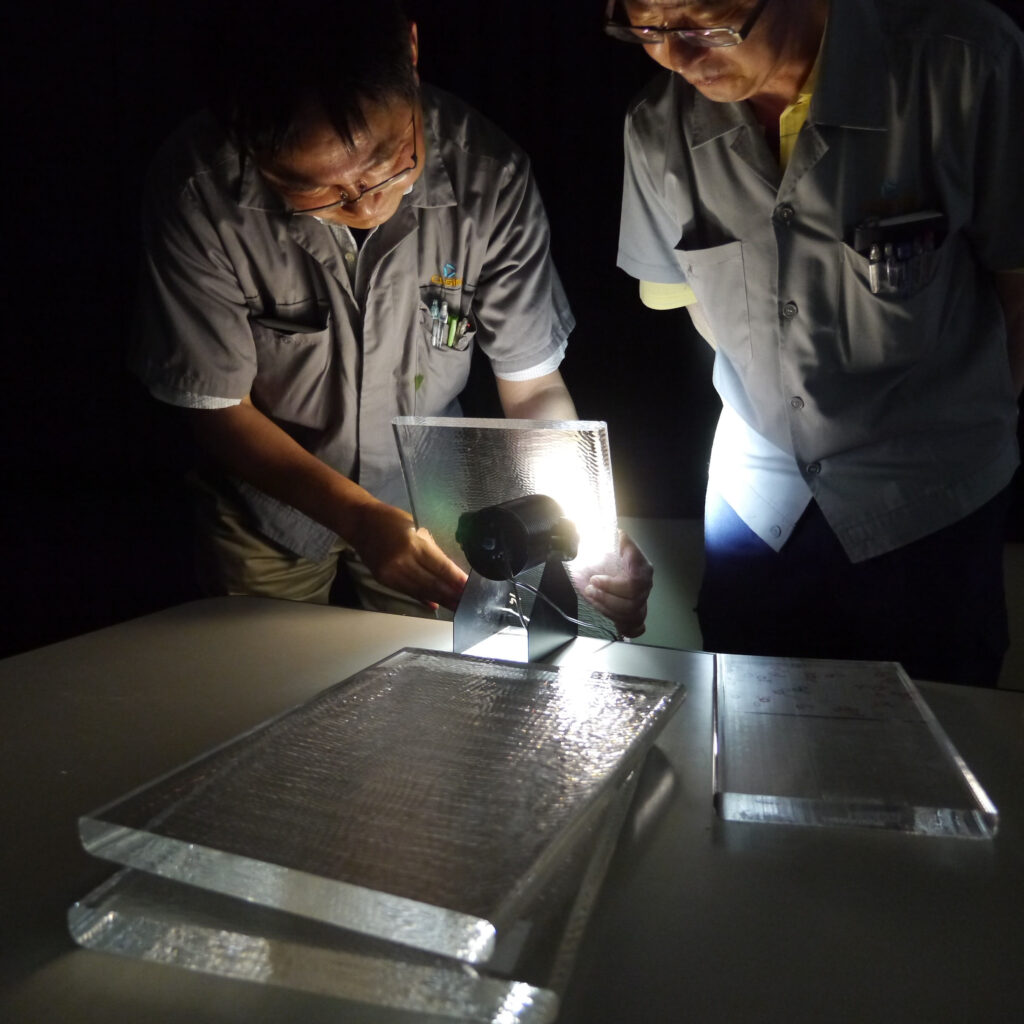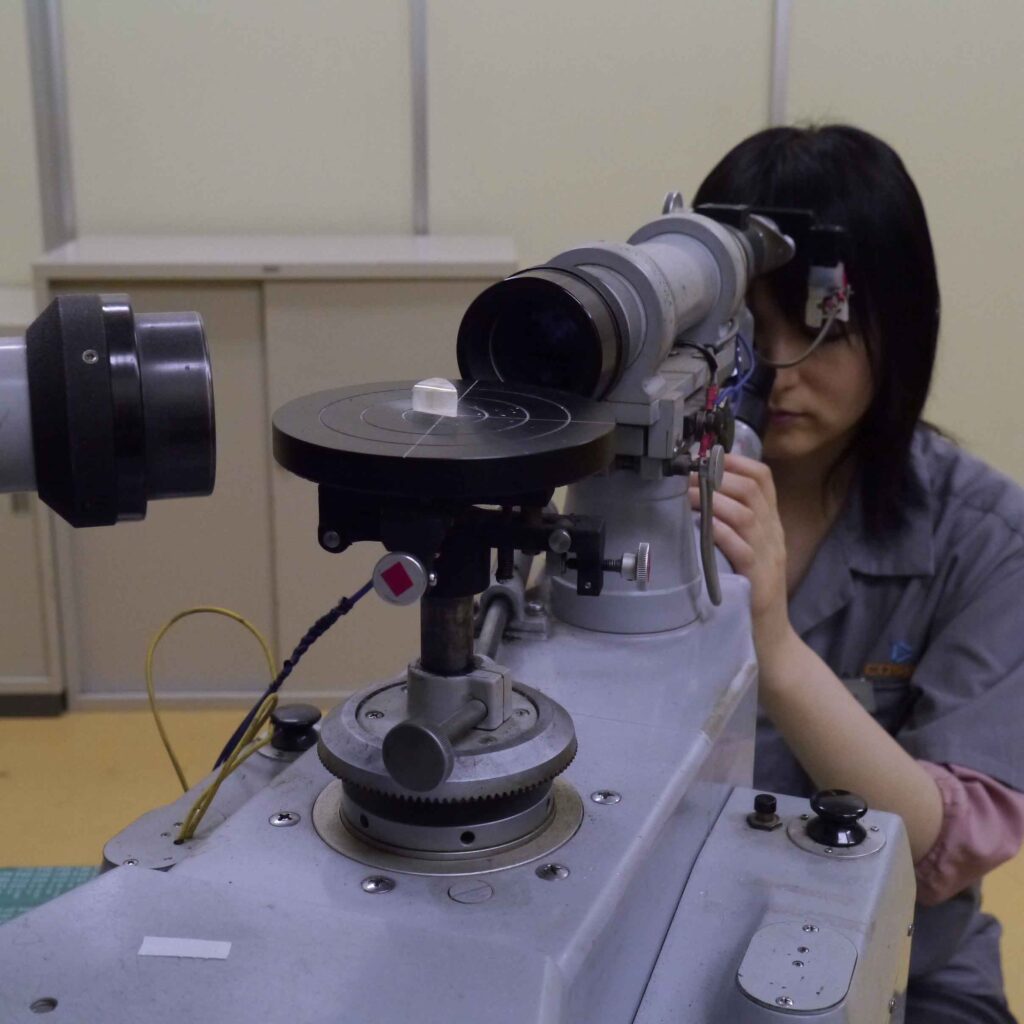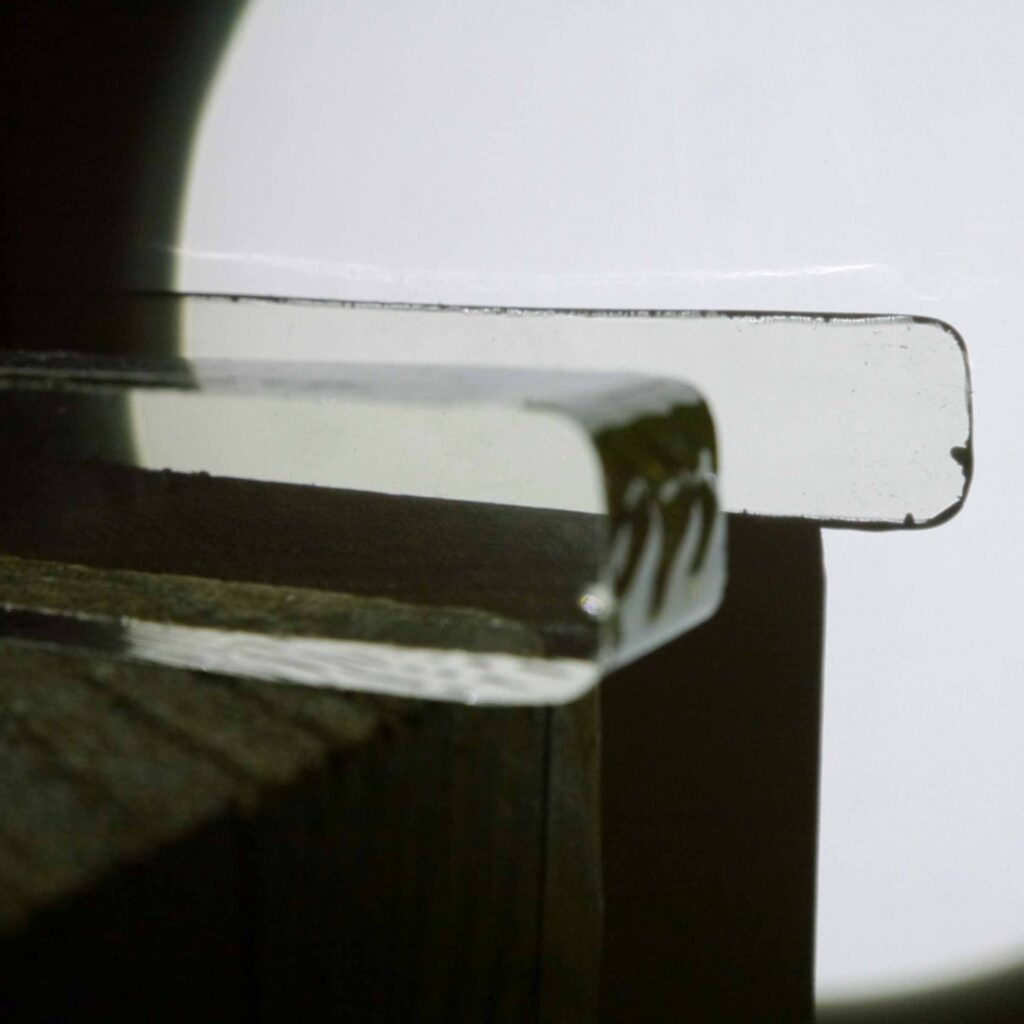Careful inspection of glass materials

Every bar of optical glass at Cosina is held up to a light and its cross-section carefully checked for tiny bubbles and foreign matter before it can be used to make optical elements. Though optical glass contains very few bubbles, it is very hard to prevent at least some from forming in the glass manufacturing process. In fact, if you take a close look at lenses made in the first half of the 20th century, you will likely find a bubble or two. Bubbles have long been allowed as long as they did not affect photographic results, but we strive to eliminate them completely for the sake of better picture quality and esthetics. The naked eye can detect bubbles and foreign matter as small as 0.03 mm in size. For smaller sizes, a microscope is used.

Cosina also meticulously measures the refractive index of glass as it is closely tied to lens performance, and the Abbe’s constant number (Abbe number) that indicates material dispersion (chromatic aberration) by wavelength. Standard values are set for the refractive index and Abbe number according to the type of glass, but the actual values tend to vary within their tolerance ranges. The refractive index can be controlled a bit up until the lens blank is made, but it is difficult to adjust the Abbe number. The high-end optical lenses made by Cosina are designed to a more rigorous Abbe number than that specified by international standards. Put differently, our efforts to carefully select quality materials means that we want to improve the picture quality of products from scratch.

We also check carefully for phenomena known as “striae.” A striae is a minute variation in the refractive index inside a piece of optical glass. Slight inconsistencies in the refractive index are searched for using a technique called “shadowgraphy.” If any trouble spots are discovered, the glass is disqualified as lens material. The skill needed to interpret striae has been passed from highly experienced veterans. So, the careful selection of glass materials that initiates lens manufacture is how we responsibly deliver the kind of quality worthy of a high-end optical product.